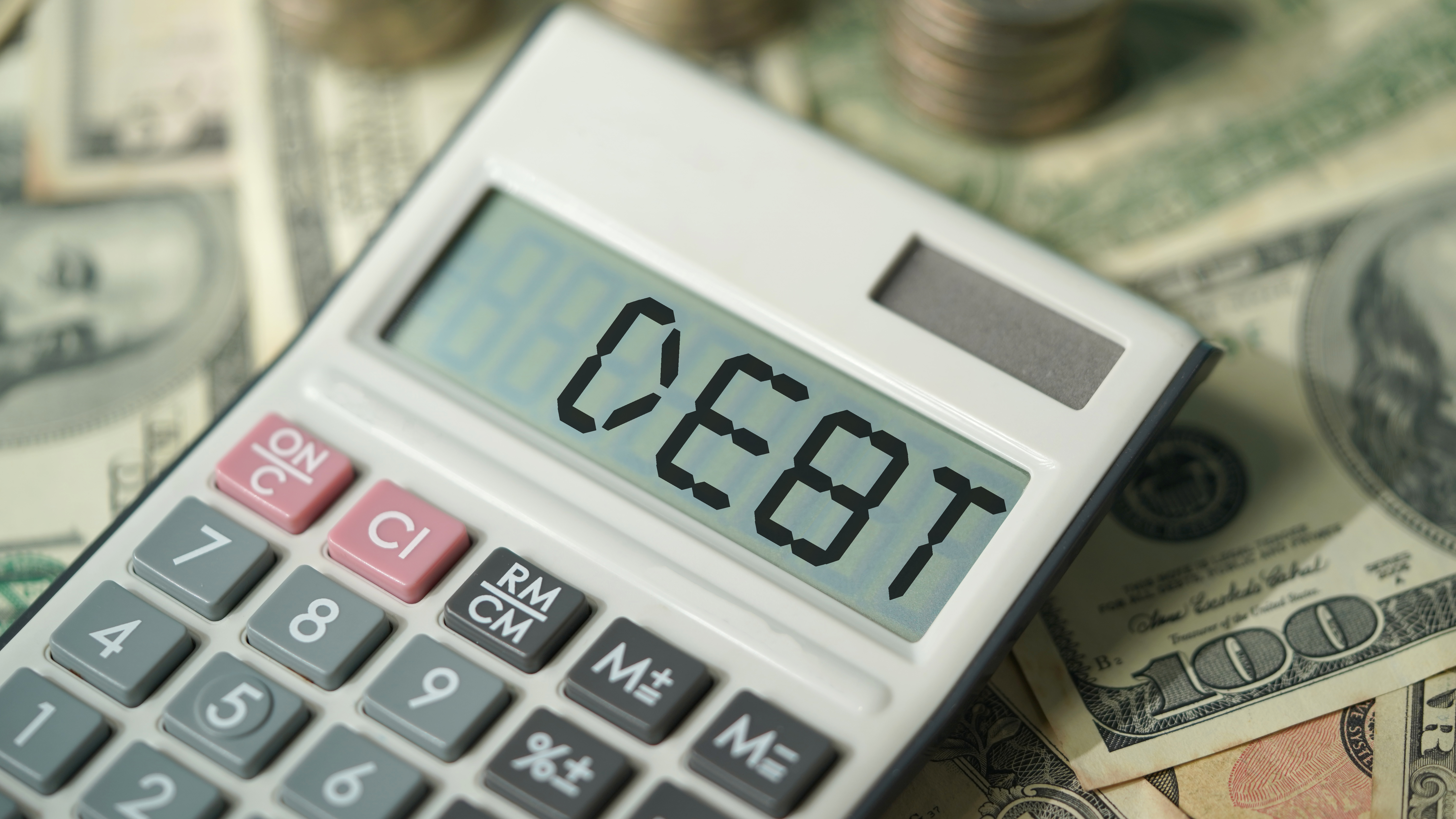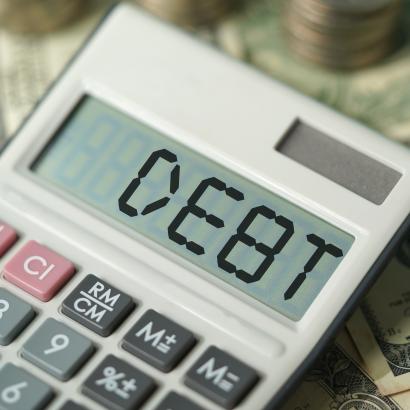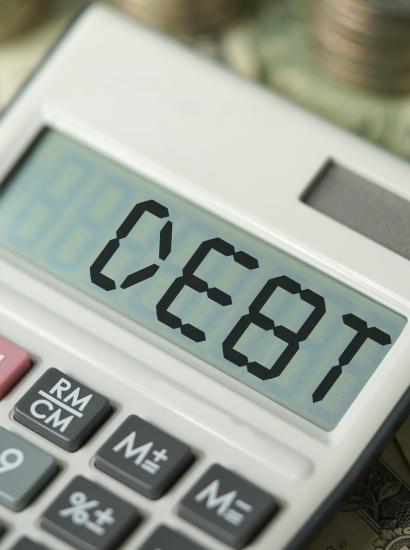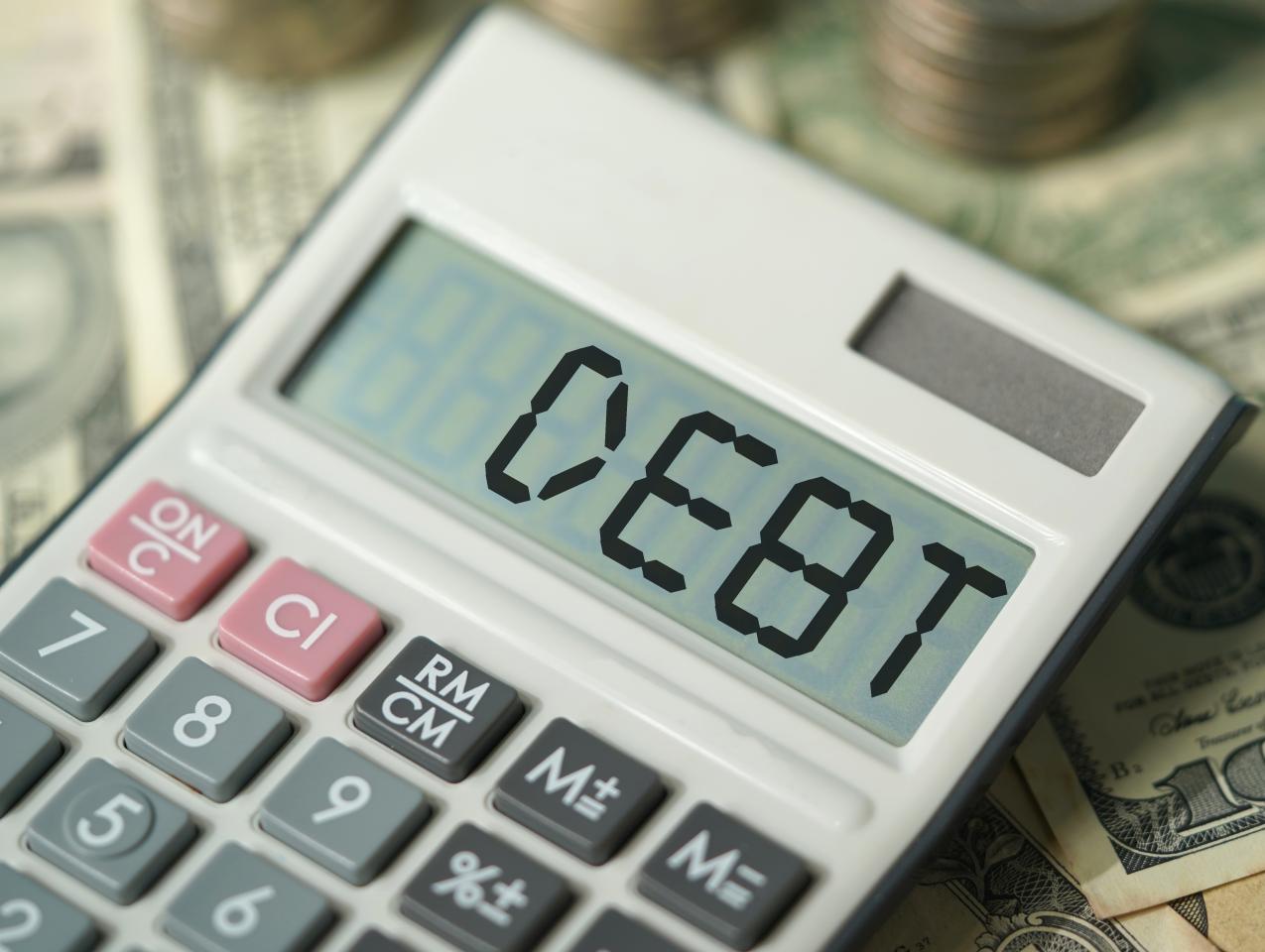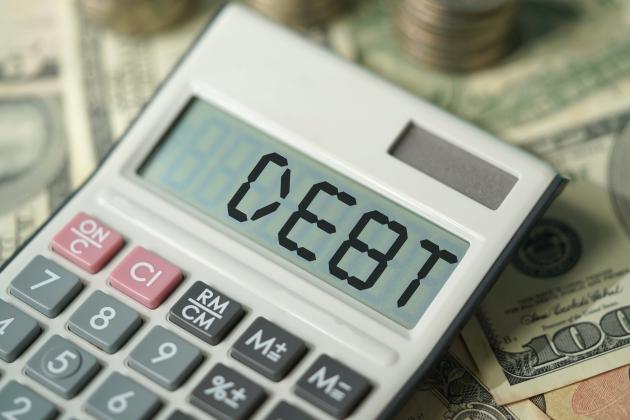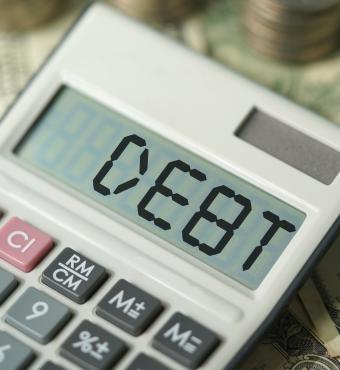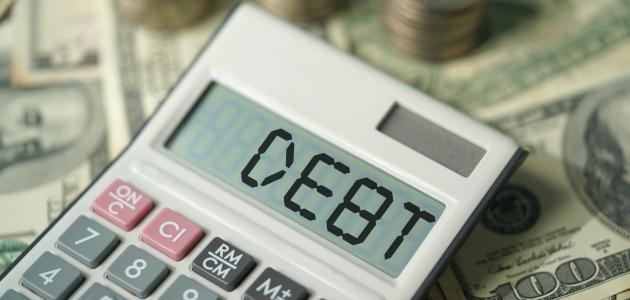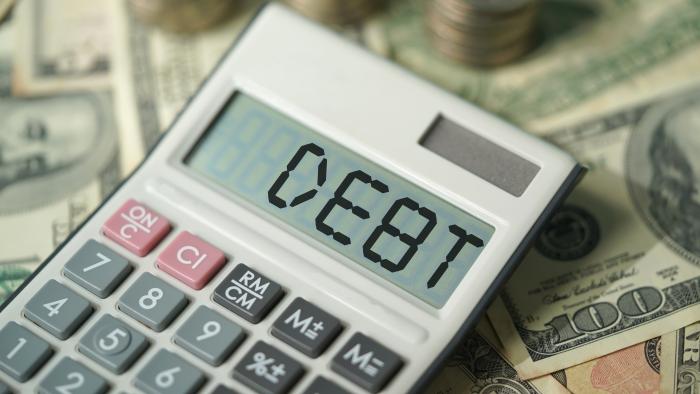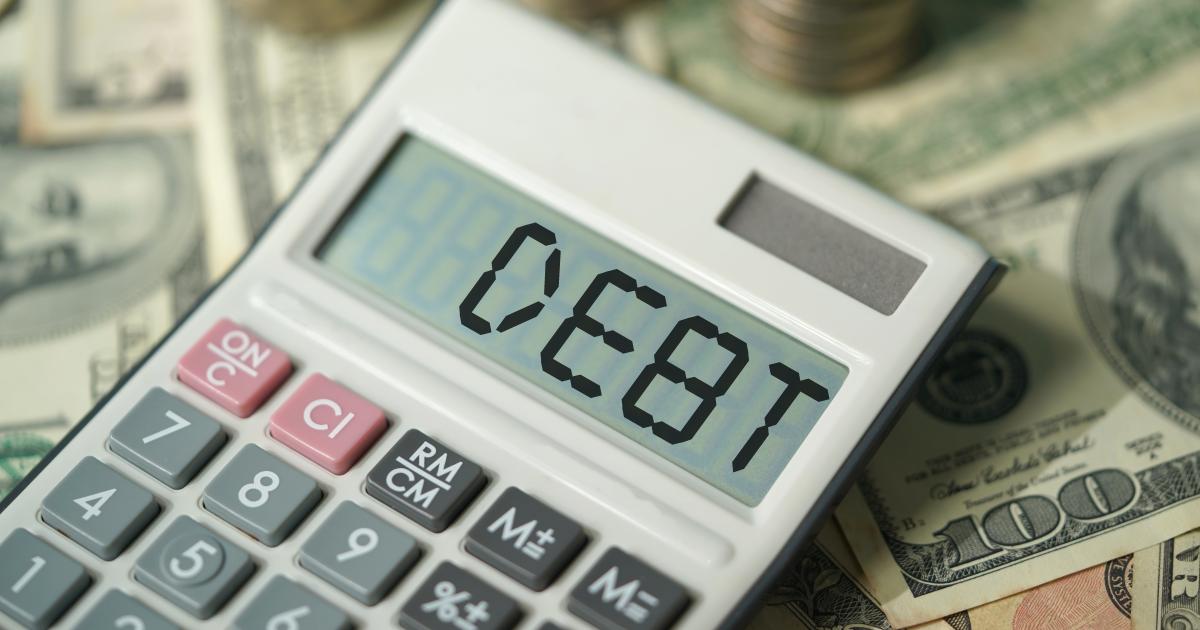As we near June 1, the date at which Treasury Secretary Janet Yellen claims that the federal government will default on the federal debt if the debt ceiling is not raised, there’s a lot of discussion about the debt, as well there should be. Republican House Speaker Kevin McCarthy has managed to corral enough votes in the House of Representatives to pass a bill that would allow an increase in the federal debt limit and roll back discretionary spending to the 2022 level and then allow it to rise by 1 percent annually for the next ten years. What that means, since inflation is likely to average over 1 percent, is that discretionary spending would fall slowly in real terms. So far, President Biden has refused to negotiate any cuts in the rate of growth of discretionary spending. But even if he goes along with Speaker McCarthy, the slower growth in discretionary spending will be only a small down payment on a huge and growing problem: the massive and growing federal debt.
If the federal debt continues to grow at the rate predicted by the Congressional Budget Office, then, to avoid default in the 2030s, Congress will have to pass a package of spending cuts and tax increases. On the tax side, though, Congress is constrained by one of the few constants that we ever see in macroeconomics: the size of federal tax revenues as a percent of gross domestic product. If that constant holds up in the future, the only choices would be large spending cuts or a default on the federal debt.
The History of the Deficits and Debt
Most readers of this article probably already know this, but it bears stating anyway. The federal budget deficit is the amount by which federal government spending exceeds federal government revenues. The federal debt is the sum of all the deficits minus the occasional budget surpluses.
Since 1961, there have been only five years in which the federal government had a budget surplus: 1969, 1998, 1999, 2000, and 2001. In many years, the deficit was small. In other years, especially recently, the deficit has been huge. As a result, the federal debt in the hands of the public has grown substantially as a percent of GDP. It reached its postwar low in 1974 at 21.9 percent of GDP and, by the fourth quarter of 2022, had hit a whopping 93.9 percent of GDP. The “public” that holds debt, by the way, includes foreigners and foreign governments.
The Future of Federal Deficits and Debt
The future looks even grimmer. The Congressional Budget Office, an agency that tries to maintain its independence from factions in Congress and reasonably succeeds, periodically estimates future deficits and debt. In its latest estimates, published last week, the CBO projects budget deficits year by year. In 2033, the budget deficit is expected to be $8.7 trillion, which would be 7.3 percent of GDP. This is up from $1.4 trillion in 2022, which is “only” 5.5 percent of GDP. By 2033, the federal debt held by the public is expected to reach 118.9 percent of GDP.
Are these numbers likely to be wrong? Yes. You can never accurately predict ten years into the future. But I’m reasonably confident that by 2033, the federal debt held by the public will exceed 100 percent of GDP unless Congress and the president take serious action in the next few years.
Some economists older than me have told me they don’t worry about federal debt exceeding the GDP because we’ve been there before. They point to 1945, the last year of World War II, when federal spending to fight the war ballooned the debt to $287.7 billion. At the time, the gross national product (we didn’t measure GDP back then) was only $213.6 billion. That means that the debt was 134.7 percent of GNP.
But here’s the crucial difference. Because we had just come off an all-out war, federal spending fell like a stone. As I noted in my 2010 study “The US Postwar Miracle,” the US government “brought federal spending down from a peak of 44 percent of gross national product (GNP) in 1944, the peak year for war spending, to only 8.9 percent in 1948, a drop of over 35 percentage points of GNP.” The debt in 2033 wouldn’t be a problem if the feds dropped spending by even 5 percentage points of GDP. But no one is advocating that. In short, we haven’t been there before. We are entering a whole new situation.
If you look at Table 1 of last week’s CBO update, you’ll notice that in the next ten years, federal spending as a percentage of GDP is expected to be relatively stable. It was 25.1 percent of GDP in 2022, will likely fall to 24.2 percent of GDP in 2023, and then will likely hold relatively steady for the next few years, ranging from 23.5 percent in 2024 to 24.2 percent in 2030, and then rising in steps to 25.3 percent of GDP in 2033. What, you might wonder, is the big deal?
Here’s the answer. Federal spending in 2022 as a percent of GDP was freakishly high. As the CBO points out, from 1973 to 2022, it had averaged 21.0 percent of GDP. An additional 3 to 4 percentage points of GDP, permanently locked in, are a big deal.
But the really big deal is the projected spending, deficits, and debt beyond 2033. In its Table 4, the CBO projects that from 2034 to 2043, federal spending will average 26.3 percent of GDP and, from 2044 to 2053, 29.0 percent of GDP. Deficits are projected to average 8.0 percent of GDP from 2034 to 2043, and a stunning 10.2 percent of GDP from 2044 to 2053. By 2043, the CBO predicts, federal debt held by the public will be 152 percent of GDP and, by 2053, 195 percent.
The Big Drivers of Spending Increases
What are the big drivers of spending increases? There are three main ones: Social Security, major health programs (mainly Medicare, Medicaid, and ObamaCare), and net interest on the debt. Between 2022 and the ten-year 2044–2053 average, Social Security will rise from 5.1 percent of GDP to 6.4 percent of GDP, spending on the major health care programs will rise from 5.6 percent of GDP to 8.2 percent of GDP, and net interest on the debt will rise from 1.9 percent of GDP to 6.2 percent of GDP. That means that spending on those items alone will increase federal spending by 8.2 percent of GDP.
These three areas of spending alone will total 20.8 percent of GDP. To put that in perspective, recall that between 1973 and 2021, overall federal spending, not just for those programs, averaged almost the same percent: 21.0 of GDP.
Herb Stein, my former boss at the Council of Economic Advisers when I was a summer intern in 1973, famously stated, “if something cannot go on forever, it will stop.” Without major cuts in the rate of growth of spending or major increases in taxes, this is unsustainable. It will stop. We just don’t know how.
What About Taxes?
So far, I’ve focused on the spending side. What about taxes? Couldn’t they be raised substantially as a percent of income? They could. I think doing so is a bad idea, but that reflects my view that government generally does things badly and people use their own money better than the government uses their money. There is a tremendous amount of waste in the government.
But even if you don’t share my view about government waste, you need to confront one of the most interesting facts in US fiscal policy: for most years since the Korean War ended, federal revenues have been somewhere between 15 and 19 percent of GDP, with no apparent trend, as this figure from the St. Louis Federal Reserve Bank shows. From 1973 to 2022, the CBO reports, the average was 17.4 percent of GDP.
We can’t be sure why this is so. My own hunch is that it reflects the fact that for all the problems the United States still has, a large core of people don’t want a huge, intrusive federal government. Absent more complicated indicators, they see taxes as the cost of government and want to keep them from growing substantially.
Could Budget Cuts Work?
The bad news is that there appears to be zero appetite among congressional Democrats and only a slight appetite among congressional Republicans for large cuts in the growth of spending. The good news is that if they ever decided to take spending cuts seriously, they could see a major US example after World War II and more recent experiences in Canada and the United States in which spending actually fell in real terms (post–World War II United States) or spending as a percent of GDP fell substantially (Canada and the United States) with apparently few bad effects and some major good effects.
I noted the case of World War II earlier. Two things about that episode are especially remarkable. The first is that the cuts were so deep. The second is that the huge spike in unemployment that Keynesian economists such as Paul Samuelson predicted did not occur. In fact, between 1945 and 1948, when the spending cuts occurred, the unemployment rate never rose above 3.9 percent and, between September 1945 and December 1948, the average unemployment rate was only 3.5 percent. If you look at official government data, you will see that there was a recession at the time, but if you talk to people who were conscious adults in the postwar years (talk to them soon), you will mainly hear about the economic boom.
More recently, the experiences of Canada from 1995 to 2006 and of the United States from the early 1990s to 2000 are informative.
In Canada, a Liberal government with Jean Chrétien as prime minister and Paul Martin as finance minister seemed unlikely to rein in government spending. Chrétien had been mentored by Pierre Trudeau, who, more than any other figure in Canadian politics, was responsible for the explosion of federal spending from the late 1960s through the early 1980s. Paul Martin’s father had been known as the father of Medicare, Canada’s single-payer system. Yet, as I showed in my 2010 study “Canada’s Budget Triumph,” starting in 1995, this unlikely pair brought down federal spending on programs (not including interest) from a high of 17.5 percent in 1992–93 to 11.3 percent in 2000–2001.
Of course, that was Canada, and one virtue of Canada’s parliamentary system is that an elected government is both executive and legislator and, therefore, can turn a budget around quickly. In our US system of checks and balances, that’s harder to do. But it’s not impossible, as the US experience in the 1990s shows. In my 2015 study, “US Federal Budget Restraint in the 1990s: A Success Story,” I noted that between 1990 and 2000, “federal spending fell from 21.85 percent of GDP to 18.22 percent, a drop of 3.6 percentage points.” It is true that 2.2 percentage points of this reduction was in defense spending, something that occurred due to the end of the Cold War. But that still leaves 1.4 percentage points due to declines in other spending, mainly net interest. While non-defense, non-interest spending did not fall much, that in itself is interesting. It’s like Sherlock Holmes’s famous “dog that didn’t bark.” It reflects the fact that President Clinton and House Speaker Newt Gingrich, though political opponents, worked together to rein in spending.
Am I optimistic that Congress and the president will get spending under control? Although I tend to be a dyed-in-the-wool optimist, I am pessimistic. My point is simpler: our and Canada’s past experience show that it can be done.
Conclusion
In response to economists Lawrence Summers and Jason Furman, who minimized the danger of large budget deficits, I wrote two articles on this site: “Who’s Afraid of Budget Deficits? I Am,” February 20, 2019, and “Furman, Summers, and Taxes,” May 1, 2019. I wonder what they think of federal budget deficits and debt now. Of course, they could argue that no one expected the gush of federal spending that came with COVID-19 and lockdowns under both Presidents Trump and Biden. But that suggests yet another reason not to be so calm about deficits and debt: we need to keep our powder dry. My guess is that Summers and Furman are at least a little more worried than they were.







